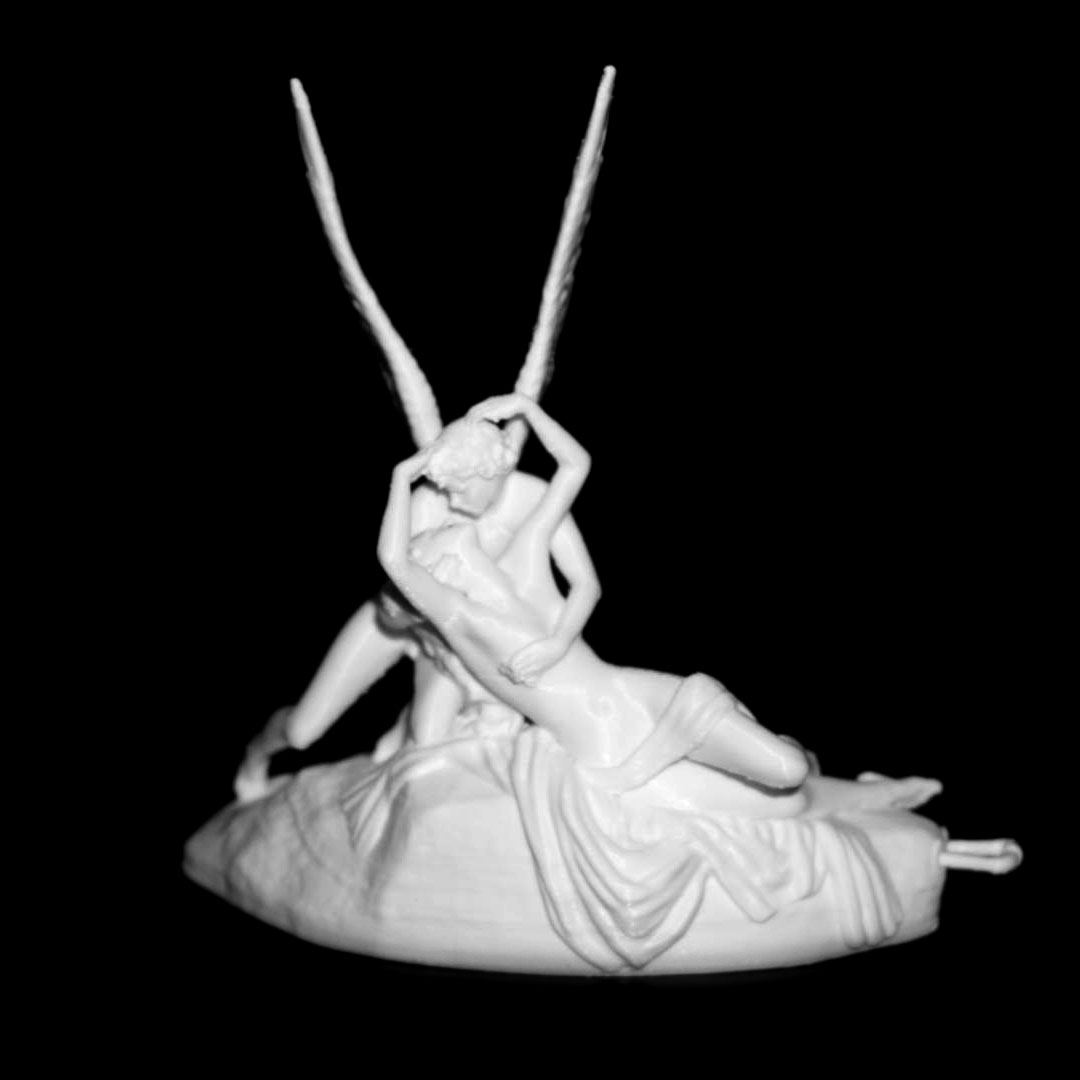
Psyche Revived by Cupid's Kiss at The Louvre, Paris
myminifactory
The story of Cupid and Psyche remains a timeless artistic choice in the neoclassical period. Antonio Canova created many versions of this theme; most were made from terracotta, but he also sculpted beautiful marble groups, two of which are on display at the Louvre: Cupid and Psyche standing together, and Psyche Revived by Cupid's Kiss. The figures of Cupid and Psyche stand facing each other, with Cupid completely naked and Psyche modestly draped. He wraps his arm around her shoulders, while she raises his left hand with hers to place a butterfly on his palm. The butterfly represents her soul, which she offers innocently to Cupid. The wandering of the soul was an essential concept in Neo-platonic philosophy, which Canova adhered to. The love between the two characters is represented simply and naively by their contemplation of the butterfly. The group stands on a high cylindrical pedestal decorated with garlands of flowers and a butterfly. The upper part of the base can be turned using a handle that remains visible today, although it is now blocked for protection. Canova, a sculptor from Possagno, was only thirty years old when he created this sculpture at the request of a Scottish colonel named Sir John Campbell, whom he met in Naples in 1787 and who also commissioned the famous group known as Psyche Revived by Cupid's Kiss (now in the Louvre). Many artists who visited Canova's studio in Rome admired these two sculpted groups. Due to the difficulties of transporting them to England, the groups remained in Canova's studio until French troops occupied Rome in 1798. General Murat bought them for his château at Villiers-la-Garenne near Neuilly. During his first trip to Paris in 1802, Canova visited his two masterpieces in their new home. The two groups later entered the imperial collections before being acquired by the Musée du Louvre. Canova created a second marble group from a plaster model of the sculpture in the Louvre; this second work is now on display at the Hermitage Museum in St Petersburg, having been acquired by Czar Alexander I in 1815 as part of the collection of Napoleon's first wife, Josephine. Other examples of Canova's work—Daedalus and Icarus, Venus and Adonis, Mars and Venus, Hector and Ajax—also demonstrate his skill in designing sculptures of two standing figures, a difficult artistic feat. Canova found simple iconographic solutions for this group, where nothing is rigid or static. He transcended the ancient model of Cupid and Psyche in the Capitoline Museum to create genuine duality and true complicity between the characters. Each depends on the other. The interplay of gazes, interconnected gestures, two heads close together, a group of three hands, gracefully linked bodies… everything is designed to create a single sculpture rather than two individual figures. This group of Cupid and Psyche standing is one of Canova's finest works; it inspired many other artists and was widely copied throughout the 19th century.
With this file you will be able to print Psyche Revived by Cupid's Kiss at The Louvre, Paris with your 3D printer. Click on the button and save the file on your computer to work, edit or customize your design. You can also find more 3D designs for printers on Psyche Revived by Cupid's Kiss at The Louvre, Paris.
